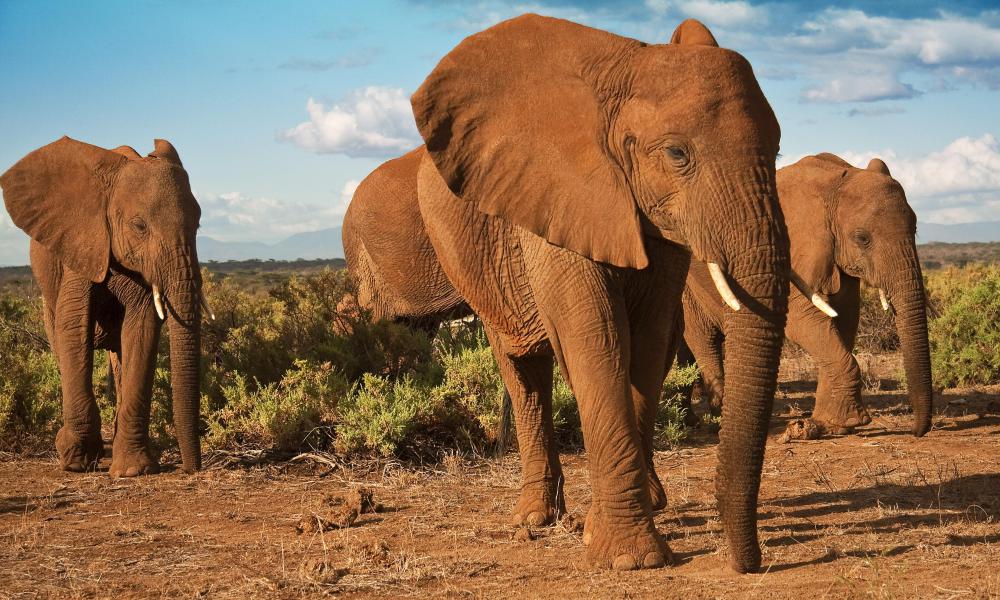At AllThingsNature, we're committed to delivering accurate, trustworthy information. Our expert-authored content is rigorously fact-checked and sourced from credible authorities. Discover how we uphold the highest standards in providing you with reliable knowledge.
What Is a Proboscis?
The term proboscis refers to the nose of an animal, vertebrate or invertebrate, that is long and elongated. The word is in Latin format, tracing its origin to the combination of two Greek words: pro and bosko. The former means “before” or “forward,” while the latter means “to feed” or “to nourish.”
In invertebrates, the proboscis is best described as a feeding and sucking organ of tubular design. For instance, the hoverfly uses its proboscis to extract the nectar of flowers. Other invertebrates with this organ include butterflies, moths, ribbon worms, snails and slugs.

When it comes to vertebrates, the proboscis is most commonly associated with the elephant trunk, which is actually a combination of that mammal’s nose and upper lip. Besides providing a sense of smell, this specialized appendage is incredibly versatile, used for a variety of tasks that include sucking up water for drinking and bathing, picking up grass, uprooting trees and interacting with other elephants.

Another prime example of a vertebrate with a proboscis is a mammal whose name actually incorporates the word: the proboscis monkey. It is also known by the scientific name Nasalis larvatus and alternatively called the long-nosed monkey. The monkey's nose serves as an amplifier for its warning calls in times of danger. Also, it is theorized that the males of the species use their noses to attract potential mates. The proboscis on this type of primate can be as long as 7 inches (17.8 centimeters).
There are other vertebrates that possess the proboscis. The tapir, a pig-like herbivore native to Central and South America as well as Southeast Africa, has a snout that it uses for grasping or holding. The snout on the male elephant seal, which belongs to the genus Mirounga, is said to resemble that of an elephant, and it is capable of producing incredibly loud roaring sound. Other examples include the aardvark, a nocturnal burrowing animal native to Africa; the numbat, a marsupial from Western Australia; the elephant screw, a tiny African insectivore; and the Hispaniolan Solenodon, another nocturnal burrowing animal native to the island shared by Haiti and the Dominican Republic.
Although the term proboscis is not usually applied to humans, it is used as an informal denotation of certain physical abnormalities. For instance, a long, elongated nose on a person can be referred to as a proboscis. The term can also be used when an unusually big nasal organ is accompanied by large eyes.
Frequently Asked Questions
What exactly is a proboscis?
A proboscis is an elongated appendage from the head of an animal that typically serves as an instrument for feeding. In many species, such as butterflies and moths, the proboscis is a tubular mouthpart used for sipping nectar. It can also refer to similar structures in different animals, like the trunk of an elephant, which is used for a variety of functions including breathing, smelling, touching, and grasping objects.
How does a butterfly use its proboscis?
Butterflies use their proboscis to drink nectar from flowers. The proboscis is coiled when not in use and extends to reach deep into the flower when feeding. It functions like a straw, utilizing capillary action to draw liquid up into the butterfly's digestive system. This specialized mouthpart is essential for their survival, as it allows them to feed on their primary food source.
Can all insects with a proboscis feed on nectar?
Not all insects with a proboscis feed on nectar. While many use their proboscis for sipping nectar, others, like certain species of flies and mosquitoes, have adapted their proboscis for piercing and sucking blood from animals. The versatility of the proboscis across different species is a remarkable example of evolutionary adaptation to diverse dietary needs.
Is the elephant's trunk considered a proboscis?
Yes, the elephant's trunk is considered a proboscis and is one of the most versatile and powerful examples in the animal kingdom. It contains over 40,000 muscles, allowing for incredible dexterity. Elephants use their trunks for breathing, smelling, touching, grasping, and producing sounds. It is an essential tool for their daily activities, from feeding and bathing to social interactions.
Do proboscises serve any function other than feeding?
Yes, proboscises can serve functions beyond feeding. For instance, the elephant's trunk is used for communication, bathing, and manipulating objects. In some insects, the proboscis can play a role in mating rituals or be used as a means of defense. The functionality of a proboscis varies widely among different species, showcasing a range of evolutionary adaptations.
How did the proboscis evolve in different species?
The proboscis evolved through natural selection to address the specific needs of different species. For example, in butterflies, the proboscis evolved to enable them to access nectar deep within flowers, thus facilitating pollination. In contrast, the elephant's trunk evolved as a multipurpose tool for survival in diverse environments. The evolution of the proboscis is a testament to the adaptability and diversity of life on Earth.
AS FEATURED ON:
AS FEATURED ON:












Discuss this Article
Post your comments